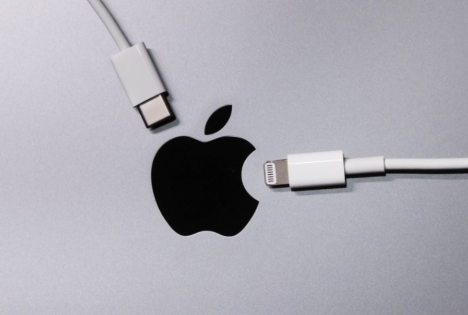The Future of Power: Embracing the USB-C Revolution

The landscape of device charging is undergoing a significant transformation, thanks to the widespread adoption of USB Type-C connectors. This innovative technology is swiftly becoming the standard for charging and data transfer across a multitude of gadgets, from smartphones to laptops and beyond. As we forge ahead into this new era of connectivity and convenience, it is essential to understand the impact of the USB-C revolution on consumers and the industry as a whole.
The Advent of USB-C
USB-C, officially known as USB Type-C, is a 24-pin USB connector system that boasts a two-fold rotationally-symmetrical design. This feature allows users to insert the cable without the hassle of aligning it in a specific orientation, unlike previous USB types. Additionally, USB-C supports various data and power protocols, enabling faster charging speeds and data transfer rates.
Enhanced Charging Capabilities
The USB C charger is at the forefront of the charging revolution, offering considerable improvements over its predecessors. One of the most significant benefits is the capacity to deliver up to 100 watts of power, which is ample for charging everything from smartphones to high-powered laptops. This level of versatility simplifies the consumer experience by creating a universal charging solution for a wide array of devices.
USB-C and Data Transfer
The strengths of USB-C extend beyond just charging capability. The standard supports the USB 3.1 specification, which means data transfer rates can reach up to 10 Gbps. This is double the speed of USB 3.0 and a tremendous leap forward in the rapid movement of large files between devices. The potential for USB-C to completely replace older USB standards is becoming increasingly clear.
Future-Proofing Devices
Manufacturers are progressively incorporating USB-C ports into new devices, signaling a move towards a more unified and future-proof design for electronics. Modern laptops often include a USB-C port, not only for charging but also for connecting to displays and other peripherals. This shift reflects a commitment to reducing clutter and enhancing the user experience.
Impact on Consumers
For consumers, the advent of USB-C means a more streamlined, efficient, and cost-effective approach to managing their electronic devices. The days of carrying multiple chargers and cables for different devices are gradually fading away, replaced by a single, powerful solution that can address a broad scope of charging needs.
The Environmental Perspective
Embracing USB-C technology also has positive implications for the environment. With a universal charging standard, the amount of electronic waste generated from outdated and incompatible chargers is likely to decrease. Furthermore, the longevity of USB-C cables and connectors contribute to a reduction in overall waste, aligning with eco-friendly consumption trends.
Challenges and Considerations
Despite the advantages of the USB-C revolution, some challenges must be addressed. Not all USB-C cables are created equal, with variations in capabilities and safety standards. Consumers must be discerning when purchasing cables to ensure they are getting a product that safely and effectively meets their needs.
Read Also: Home Window Replacement That Pays Off in Energy Savings
Looking to the Future
The industry’s enthusiasm for USB-C reflects its potential not just for the present, but for the future of device connectivity. As technology advances, USB-C could become the standard not only for charging but also as a connector for virtual reality headsets, gaming devices, and other emerging technologies.
Conclusion
The USB-C revolution represents a pivotal shift in the world of device charging and connectivity. With its numerous advantages, it’s no surprise that USB-C is rapidly gaining traction. It offers a glimmer of the future in which one robust, efficient, and versatile connector can meet a myriad of electronic needs. As consumers and manufacturers alike continue to embrace the potential of the USB-C standard, the future of power looks brighter and more connected than ever before.
In conclusion, the widespread adoption of USB-C technology is proving to be more than a mere trend; it’s the dawn of a new paradigm in power delivery and data transfer. A robust USB C charger is a testament to the potential that lies in this small, yet mighty connector. As we continue to navigate the realms of innovation and efficiency, USB-C stands as a cornerstone for the future of device charging—streamlining the way we power our lives.




